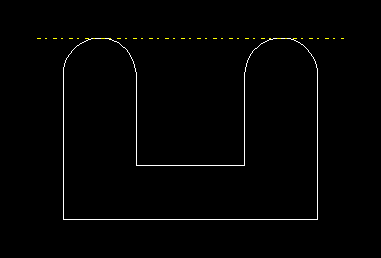Understanding a datum as a feature | ||||
|
| |||
You can edit any numerical parameters that define a datum; for example, the X-, Y-, and Z-coordinates used to define a datum point. However, a datum is always defined by the same underlying geometry you selected when you created it; if you need to define the datum using different geometry, you must delete the datum and create a new one.
You can create a datum on a part in the Part or Property module or on an assembly in other modules. If you create a dependent datum on a part, the datum moves along with an instance of the part in the Assembly module. If you create a dependent datum on the assembly by selecting entities from a part instance, the datum moves along with the instance in the Assembly module. However, if you create a datum on the assembly by entering coordinates in the prompt area, the datum remains fixed when the instance moves.
When you modify a feature, you should be aware of any parent-child relationships between your dependent datum and the modified feature. For example, consider Figure 1, which shows a dependent datum axis passing through the midpoint of two arcs. The midpoints of the arcs that define the location of the datum axis are parents of the datum axis.

If you modify the part, Abaqus/CAE regenerates the datum axis so that it still passes through the two midpoints, as shown in Figure 2.
